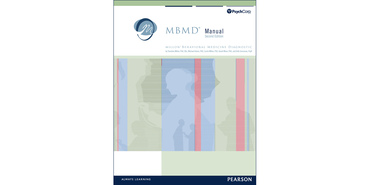Assessment of psychosocial factors that may support or interfere with a chronically ill patient's course of medical treatment. Guidance on using this test in your telepractice
Millon Behavioural Medicine Diagnostic
MBMD
Assessment of psychosocial factors that may support or interfere with a chronically ill patient's course of medical treatment. Guidance on using this test in your telepracticeChoose from our formats
Kits
Starter & complete kits, print & digital
2 options
Test forms & reports
Booklets, record forms, answer sheets, report usages & subscriptions
1 option
Support materials
Manuals, stimulus books, replacement items & other materials
11 options
Training
Onsite, virtual & on-demand trainings
1 option
All products
All tests and materials offered for MBMD
15 options
